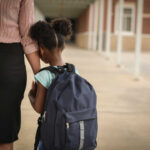
A new analysis of child well-being in the U.S. Virgin Islands shows that the territory’s young people are growing up amid dramatic population loss, deep economic strain, fragile support systems, and persistent gaps in health and education. These findings come from the 2025 KIDS COUNT USVI Data Book released by the St. Croix Foundation for Community Development, which presents a detailed picture of the challenges and progress shaping the lives of children across the territory.
The report, titled When Data Speaks: The Voices of Our Children, organizes its findings into six domains: economic well-being, family and community, education, health, opportunity youth, and community bright spots. For the fifth consecutive year, the Foundation urges policymakers to use the data as a tool for coordinated action rather than observation.
One of its clearest warnings is the rapid decline of the child population. From 2000 to 2020, the overall population fell by about 20 percent, but the number of children dropped by half—from 34,289 to 17,086. Children now represent just 19.6 percent of the population, with St. John at the lowest share at 15 percent. The report says this shift is straining schools, shrinking the future workforce, and placing increased pressure on working-age adults as the territory ages.
Economic indicators remain troubling. The most recent federal data show that 33 percent of all USVI children live in poverty, including 37 percent of those under age five—more than twice the national average. Wages lag behind U.S. levels, and in interviews included in the report, young people describe high living costs and limited career options as key reasons many choose to leave the territory. Unemployment, however, has stayed under 10 percent for four straight years, reaching 4 percent in 2024.
Housing data reflect shifting needs and persistent disparities. A total of 8,787 residents rely on public housing or Housing Choice Vouchers, with children making up 38 percent of community housing residents and 42 percent of voucher households. Women head the vast majority of these homes—82 percent in community housing and 88 percent among voucher holders. Average household income also differs sharply between districts, with St. Thomas/St. John at $24,315 and St. Croix at $14,435.
In early education, Early Head Start enrollment rose to 109 children, while Head Start enrollment fell to 671 students but reached its highest insurance coverage levels since 2016. Public school enrollment grew slightly for the second consecutive year, reaching 10,410 students. Private school enrollment declined, and homeschooling continued falling from pandemic peaks.
Academic results show mixed progress. Early childhood readiness scores improved, particularly in language development. English Language Arts performance on the Smarter Balanced Assessment saw gains in several grades, but math proficiency remains low across all levels, with 83 percent of 11th graders scoring below standard. Chronic absenteeism fell from 31 percent to 23 percent, though St. Croix’s rate more than doubles that of St. Thomas/St. John. Graduation rates climbed to 81 percent, the highest in a decade.
Health indicators reveal several areas of concern. Births declined to 818 in 2024, while preterm births increased from 71 to 89. Low birthweight babies made up 5.3 percent of births. Nutrition programs show declining but significant participation, including 1,896 children served by WIC and 10,512 children receiving SNAP benefits. Child passenger safety remains a major issue: 70.1 percent of children under 14 rode unrestrained or under-restrained, with 118 unrestrained child passengers documented in incidents on St. Thomas alone.
The report also examines “Opportunity Youth”—those ages 16 to 24 not in school or working. Participation declined in all youth workforce programs reviewed, including SYWEP, WIOA Youth, and LIFT. Human Services data show 121 youth receiving intervention services, with 89 adjudicated. Thirty-nine percent of offenses were violent, 94 percent of the youth reported drug or alcohol use, and 72 percent came from very low-income homes. Half had a sibling involved in the juvenile justice system.
Despite the challenges, the Data Book features bright spots. Organizations such as the Caribbean Centers for Boys & Girls of the Virgin Islands, Family Resource Center, My Brother’s Workshop, the Department of Sports, Parks, and Recreation, CHANT, and the Women’s Coalition of St. Croix continue to deliver vital programming. Programs noted include youth mentorship, arts and culture engagement, survivor support services, and workforce development.
The report identifies major data gaps that hinder timely policy response. Missing or outdated information includes mental health data from the Youth Risk Behavior Survey, last administered in 2017; updated child poverty data; youth crime statistics; youth labor-force participation; and consistent reporting on child maltreatment and Medicaid enrollment. The Foundation notes that the 2026 Data Book is expected to include new YRBS results.
Recommendations listed throughout the report call for coordinated data systems, stabilization and modernization of education infrastructure, expanded childcare and early learning opportunities, more workforce pathways, stronger behavioral health support, and investment in community-based programs proven to support vulnerable children. The Foundation emphasizes that policymakers should use the KIDS COUNT Data Dashboard to guide targeted decision-making.
The report urges leaders to take the data seriously, writing that each indicator “should serve as both a mirror and a map.” The Foundation argues that children have already made clear what they need: economic stability, safe schooling, mental health services, and meaningful opportunities to remain and thrive in the Virgin Islands. “Each data point is an invitation,” the report states, calling for systems that reflect the strength and potential of the territory’s youth.
British Caribbean News


